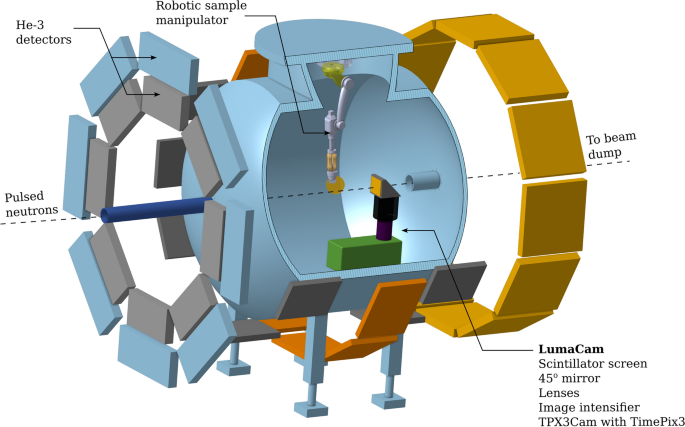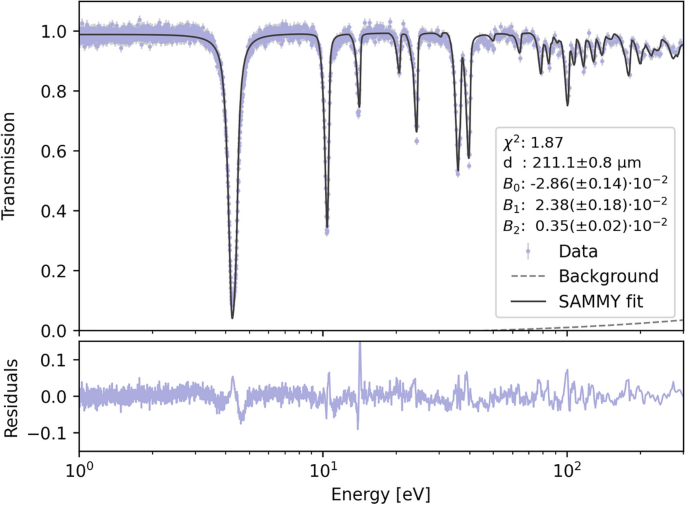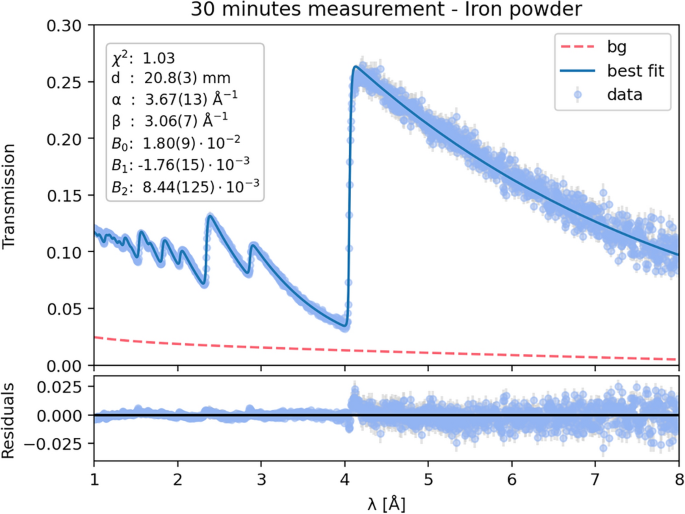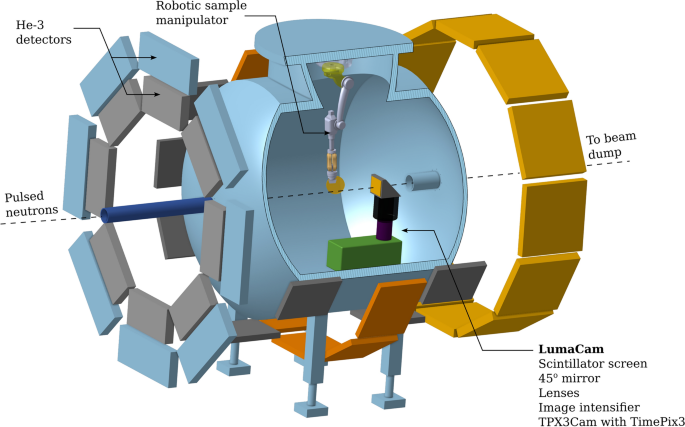Neutron imaging and diffraction are complementary techniques that probe materials across various length scales. Recent advancements in hybrid pixel detector technologies have enabled significant progress in neutron imaging, particularly with Time-of-Flight (ToF) techniques. The integration of these techniques provides unique insights into material structure and composition.
The High-Pressure-Preferred Orientation (HIPPO) instrument at the Los Alamos Neutron Science Center has been upgraded with a state-of-the-art LumaCam system, enabling simultaneous diffraction and imaging capabilities. This combination allows for the characterization of complex materials with varied compositions and geometries.
Studies on various samples, including a natural silver specimen, a large-grain steel sample, and a depleted uranium cylinder, demonstrate the capabilities of the enhanced HIPPO instrument. The results show that combining diffraction and imaging techniques provides a more holistic view of material properties, including crystal structure, texture, and isotopic composition.
The integration of event-based neutron imaging with diffraction at HIPPO represents a significant advancement in neutron scattering instrumentation. This approach offers new avenues for discoveries in materials science, engineering, and beyond, with potential applications in nuclear power engineering, archaeology, cultural heritage, and additive manufacturing.

The LumaCam system on HIPPO utilizes a 6LiF-ZnO:Zn scintillator screen and a TimePix3 sensor, offering superior timing characteristics and gamma rejection capabilities. The system has been successfully used for thermal/cold, epithermal, and fast neutron applications.

The results of this study demonstrate the advantages of combining neutron imaging and diffraction techniques for material characterization. The enhanced HIPPO instrument provides real-time sample alignment and positioning, complementary analysis of crystal structure and texture, and rapid data acquisition and analysis.

The study highlights the potential of this combined approach for non-destructive analysis in various fields, including nuclear engineering, archaeology, and cultural heritage. Future applications may include the mapping of residual strain and phase identification in nuclear fuels, as well as the analysis of ancient artifacts and mineral samples.

The integration of neutron imaging and diffraction techniques at HIPPO represents a significant advancement in material characterization capabilities. This approach provides researchers with a powerful tool for comprehensive material analysis, offering new insights into material properties and behavior.


